I wrote this article in early 2010 for the website almostfearless.com, and I’m reprinting it for this blog’s archive to answer a question other families often ask me: “How did you plan your year away?” There’s no quick and easy answer to that question, but this post gives an overview of how we went about it. We made—or came close to making—many mistakes in the travel-planning process, and I hope others can learn from them.
My husband and I stared at a map on the One World airline site and felt utterly bewildered. We had made the momentous decision to rent out our home for a year, travel the world, and “roadschool” our two children—but where would we go, how would we get there, and how long would we stay in any one spot?
And once we arrived who-knows-where, then what would we do and where would we sleep? We felt lost and overwhelmed—and we hadn’t even left home.
Now, many months later, we find ourselves in a lakeside cabin near the quaint town of Daylesford, Australia, about an hour from Melbourne. Last week, we lived at an eco-lodge in the Blue Mountains National Park, and before that, we toured parts of the United States, Argentina, and New Zealand. In the months to come, we’ll head to Hong Kong, Spain, Italy, and elsewhere in Europe.
In other words, we muddled through the highly subjective, somewhat arbitrary, always tortuous, often fascinating, and just as often maddening process of planning a year-long family travel itinerary. Along the way, we learned from mistakes and developed a few guiding principles to minimize the time spent planning while maximizing the chances we’ll wind up in fabulous yet affordable places.
What follows are some of the biggest mistakes a family can make while planning a far-flung, long-term itinerary (and how to avoid them). Usually these mistakes stem from the kind of well-intentioned attitudes or assumptions expressed in the bolded statements below. These are statements I personally said or thought—before I knew better.
“Let’s see the whole world!”
The biggest mistake any family can make in planning an itinerary is trying to go to too many places and do too much. This holds true for solo travelers, too. Packing, driving or flying, and then checking in and settling into somewhere new is stressful and kills the better part of a day. We discovered our two kids (ages 8 and 11), and my husband and I, are happiest when we go for depth over breadth; this is, we move around less and settle into a community for a couple of weeks.
During two months in New Zealand, we experienced both road-tripping—sleeping in a new town almost every night—and two-week stays at a couple of main destinations (Nelson and Queenstown). It was exciting to see so much, but overall we had a more satisfying time at the two-week spots, where we could get to know the community and establish normal family routines such as planning meals and doing schoolwork.
“If we’re going all the way to the Mediterranean, we’ve gotta see the Pyramids too.”
Related to the point above: Accept the fact you can’t see every “must-see.” While we were in Argentina, we agonized over whether to buy plane tickets and take a few days to see Iguazu Falls. Now we’re in Australia, and people are telling us we’re crazy to miss the Great Barrier Reef. I feel certain, however, that we did the right thing by skipping both those destinations because of the time, money and effort it would take to get there. We’ve got enough “must-sees” on our calendar. Plus, some of the most interesting travel times happen outside of typical tourist destinations, in ordinary towns where real people really live.
“Won’t it be great to live in some of the greatest cities?”
Buenos Aires … Sydney … Barcelona … Rome—our itinerary began by connecting the dots between some of the world’s most alluring cities. We figured we would rent an apartment in them for three to four weeks and take just a few weekend trips to the outlying regions.
Then we wised up to the fact that we should limit our time in big cities, or at least balance it with time in the countryside. Cities have two main drawbacks: they’re expensive, and they can be stressful for children. The noise, crowds, and security concerns grow tiresome, as does the inability to go out the front door and run around freely.
We had a fantastic apartment in Buenos Aires, for example, but our children really felt ready to leave after two weeks. Then we settled into a small town in the Patagonia Lake District, and they yearned to stay longer. Our kids are happiest—and by extension, so are we—when they’re in a more natural, less frenetic environment. Plus, as trail runners, we want to run off road and into the wild.
“I’m sure we can find someplace better if we keep looking.”
True, more research usually yields better results. But beware: travel planning can turn into a giant time suck. We could easily spend eight hours a day on the Internet reading about destinations, debating one over the other, comparing lodging options, and then trading emails with apartment managers and arranging overseas wire transfers to those who won’t take credit cards. We have spent days like that, and they’re no fun. Rather than searching for “the best” deal in “the best” place, we found it’s better to research just enough to feel that a choice seems pretty darn good, and then go for it.
“We can’t impose on people we barely know or haven’t seen in years.”
People we kinda-sorta-used-to know live in several places we’re visiting, but at first I hesitated to contact them. Then I got over my shyness and discovered how great it can be to meet up with others while traveling, especially if they have kids with whom our kids can play. In New Zealand, we met a friend-of-a-friend via Facebook and ended up having a magical day touring an area that only a local would know, and through this person we met a wonderful family who gave us the use of their house. In Italy, a couple we only met once is inviting us to their home and helping plan our itinerary around Venice.
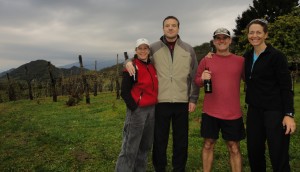
We met these trail-running friends, Serena and Luciano, only once in the States before we looked them up in their home town of Treviso, Italy. They took us to a 10K where all runners received wine!
So don’t be shy while traveling—tap into networks such as alumni groups and Facebook in order to meet people in your destinations, especially if those locals also have children. Follow other travelers’ blogs and try to meet if your itineraries cross paths.
“I can’t leave home without this guidebook—we need it now to plan, and we’ll need it later in our destination.”
Before we left home, I bought at least a dozen guidebooks from DK, Lonely Planet, and Rough Guides. And I loved them, I really did. I loved thumbing through their pages, highlighting their recommendations, and marking them with sticky notes. They felt almost as essential to getting around as my passport.
But my husband made me leave them behind because we’re traveling as light as possible. He said we wouldn’t need them, and I admit it: He was right. Books are useful to get an overview of a region, but all the tools you need for travel planning are available online, including many books in PDF or other e-reader formats.
We cast a wide net on the web when we plan our itinerary and follow many travel blogs, but we return repeatedly to these sites: Trip Advisor, Lonely Planet, and The NY Times Travel section. We also regularly use Google Earth and Google Maps to “see” a place in advance. (We actually decided against certain apartments because the street view on Google revealed they’re in a place that looks particularly shabby or inconvenient.) Once you get to a destination, the local tourist info office is brimming with more free guides and maps than you could ever need.
“We can’t leave home until we figure this f***ing itinerary out!”
I used to wake up in the middle of the night at home, survey the storage boxes and to-do lists scattered about, and think, How can we leave if we don’t even know where we’re going? How can I pull my kids out of their school and home if we don’t even know what city we’ll be sleeping in three months from now?
Now I realize it’s OK to fill in the details as you go. There is no way we could have planned everything before we left home—it would have taken too much time, and we were preoccupied with packing and moving out. All we did was determine the outline of the itinerary so we could purchase the One World tickets (and even then we changed dates and destinations along the way), and we found apartments in our first two major destinations. We also found a special place to stay during the Christmas holiday.
“OK, let’s just go. We can wing it.”
Balancing the point above is the fact that we can’t just “wing it” because it takes work to find the kind of affordable apartment-style lodging or house rentals we seek. Families traveling for extended periods generally do better in suites, cabins, or apartments big enough to sleep everyone together, plus a kitchen for cooking meals, which can be trickier to find than a standard hotel room. Otherwise, you’ll spend more money and have less family-together time when split between two hotel rooms and eating all meals out.
You’ll also need to plan ahead if you’re doing some form of homeschooling so that you have regular downtime in your itinerary for schoolwork, and so you and your kids can take advantage of the wealth of educational opportunities presented by the destinations. This doesn’t mean you should visit every museum and monument, but it does mean thinking ahead to where you’re going and how to approach it in a way that sparks the kids’ intellectual curiosity and enhances their academics.
Also, we learned the hard way to book far enough in advance for holiday seasons because some of the places we wanted to stay Down Under were already full during the mid-December through January holiday break. Similarly, if we were going to be in Europe over summer, we would have to book pretty far in advance. Generally, though, we iron out the details and book lodging approximately two to three months ahead of where we’ll be.
“We’ll blow the opportunity of a lifetime if we don’t plan right.”
I start feeling flutters of anxiety about the gaps in our itinerary that we still need to fill for the last leg of our trip, but then I remember a title of a Jon Kabat-Zinn book, “Wherever You Go, There You Are.” The phrase helps me relax and have faith that we can make the best of wherever we end up if we have the right attitude.
It’s a mistake to think you have to plan perfectly to get the most out of your journey. Remember that choosing destinations and planning all the logistics will take you only so far on the road to happiness. Whether you have a positive experience traveling depends mainly on what you do—how you interact with your travel companions, with local people, and with the surroundings—wherever you go.

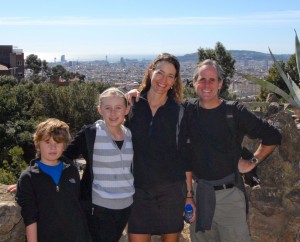
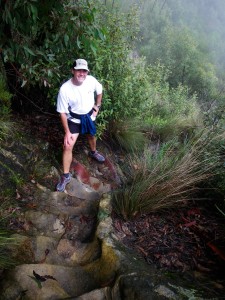
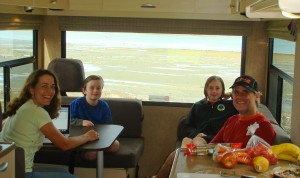
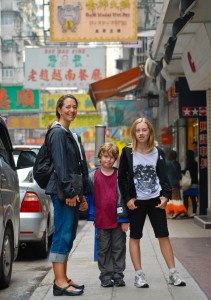
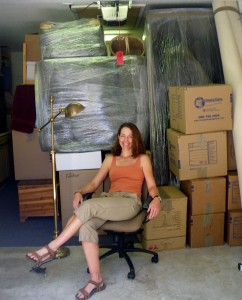
Comments are closed.